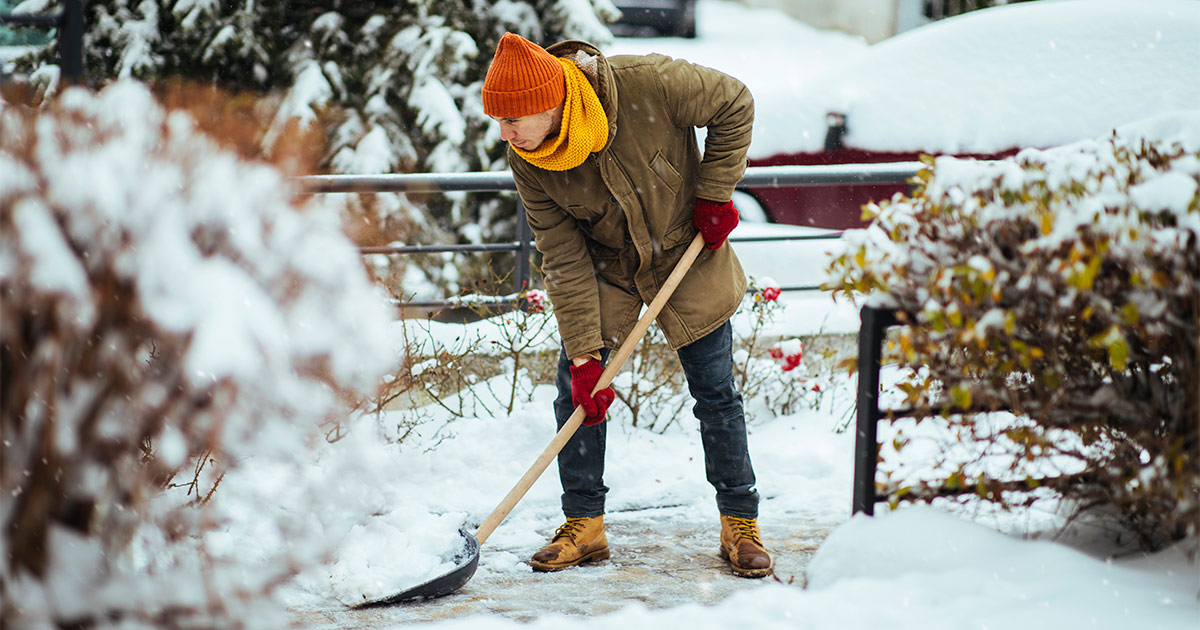
Long distance moving is never simple, but winter adds its own layer of stress. Snowy sidewalks, icy roads, and freezing temperatures can turn a moving day into a challenge before the first box is even lifted. Families often wonder how to keep themselves, their movers, and their belongings safe when the weather doesn’t cooperate.
National Van Lines has guided countless families through long distance moving in every season, and we know winter doesn’t have to derail your plans. With the right preparation, your move can still run smoothly. In this blog, you’ll learn:
- Why winter moves are more challenging
- How to prepare your home before the movers arrive
- How to help keep everyone (including the crew) safe during the move
- How to protect belongings from cold weather
- How to prepare if you’re going from a warm climate to a colder one
- What to do once you arrive to your new home

Why Is Moving in Winter Unique?
It might be obvious already, but it’s important to remember a long distance move during the winter is most affected by the weather. Snowstorms can delay trucks, ice makes walkways dangerous, and freezing air puts fragile items at risk. On top of that, daylight hours are shorter, which means there’s less natural light for loading and unloading.
Still, winter moving comes with a few hidden perks. Movers usually have more availability since fewer people relocate in cold months. That flexibility means you may be able to choose a moving date that truly works best for you. So while the season adds hurdles, it can also offer opportunities and benefits. Keeping this “silver lining” in mind can help you feel more confident and prepared to move during the winter months.
How Should I Prepare My Home Before Movers Arrive?
Your home sets the stage for how efficiently movers can work. Here are some actionable steps you can take as you gear up for the big day:
- Salt your driveways, steps, and sidewalks.
- If there is an active winter storm in the days leading up to your move date, shovel the snow once the night before and again early in the morning so movers have a safe surface.
- Put down cardboard, tarps, or rugs near doorways and hallways to protect any floors from the moisture.
- Keep the heat running, too. Movers will be in and out, but your family and pets need warmth.
A well-prepared home helps the move go faster and safer for everyone.

What Should I Do for the Moving Crew’s Safety?
Professional movers are trained for all conditions, but icy weather means higher risk. When you take actions to help keep the crew safe and comfortable, you also keep your move on track. We suggest three simple but powerful ways you can help out:
- Making sure outdoor lights are working so entry points are bright even if the sun sets early.
- If you have a garage, consider keeping it open as a temporary staging area to limit how often movers have to go across icy walkways.
- If possible, offer a place indoors where movers can warm up for a few minutes.
PSA: Small touches like bottled water or hot coffee go a long way in keeping energy high and your move running smoothly.
These small adjustments may seem minor, but together they can prevent accidents and keep the day running more smoothly than you expect
How Can I Protect My Belongings from Cold Weather?
Winter temperatures are not kind to certain items, which means that proper planning and packing is essential to keeping all your stuff safe during the journey. Electronics, instruments, and artwork are especially vulnerable to cold conditions. Wrap them with extra padding such as blankets or thick moving pads to buffer against the cold.
Moisture is another concern. Consider using plastic bins for items that might be damaged by water. Keep liquids like cleaners or paints out of the truck entirely— they can freeze and burst. For valuables or especially sensitive belongings, transporting them in your own heated car may be the safest option.
What If I’m Moving From a Warm Climate to a Cold One?
This is where many families and individuals get caught off guard. Moving from places like Florida, Texas, or Southern California to cities such as Chicago or Minneapolis tends to be a full lifestyle adjustment because the temperature and climates can be so different.
If you’re not used to freezing temperatures, plan to stock up on cold-weather essentials right away:
- Insulated boots
- Thick coats
- Gloves
- Hats
- Gear for your car like an ice scraper and windshield washer fluid rated for freezing weather
- Rock salt or ice melt.
In addition to clothing, prepare your new home. Ask your real estate agent or landlord to confirm that the heating system is running before you arrive. Check if driveways and walkways are routinely cleared, or whether you’ll need to manage snow removal yourself. Adjusting quickly makes the transition from a warm climate much less overwhelming.
What’s the Best Way to Prepare for Travel on Moving Day?
Even if movers are handling the truck, you’ll still need to drive your own vehicle to your new home. Plan carefully for that drive. Check National Weather Service forecasts and road conditions a few days in advance and again on the morning of your move. Keep an alternate route in mind in case of closures.
Equip your car for winter: snow tires or chains if needed, antifreeze, a full gas tank, and a stocked emergency kit with blankets, water, and snacks. Start the trip early in the day to maximize daylight and give yourself buffer time for delays.

What Should I Do Once I Arrive at My New Home?
Getting to your new address is just the beginning. Before unloading, clear a safe path into the house. If you arrive first, turn on the heat, check the lights, and make sure plumbing is functional.
Unpack your winter gear right away. Having boots, gloves, and warm coats easily accessible makes unloading safer and more comfortable. Create a space near the door where movers can step inside to warm up. Little details like this make settling in far less stressful.
Clearing the Path Ahead
Winter moves have always been a bit trickier considering the harsh conditions. But, with professional movers and smart preparation, winter relocations can be managed with confidence. And, today’s digital tools and resources can make managing wintry conditions that much easier, too.
Looking ahead, the biggest lesson for anyone planning a cold-season move is flexibility. Weather can’t be controlled, but your planning can. By preparing your home, protecting your belongings, and adjusting to your new climate, you’ll be ready for a cozy start in your new home.
You’re moving long distance during the winter months— and now, you’re that much more prepared to handle it, no matter how cold it gets. What if you’re moving specifically during the holidays, though? We’ve got a blog for that… read more about balancing to-dos and traditions during a holiday move.






